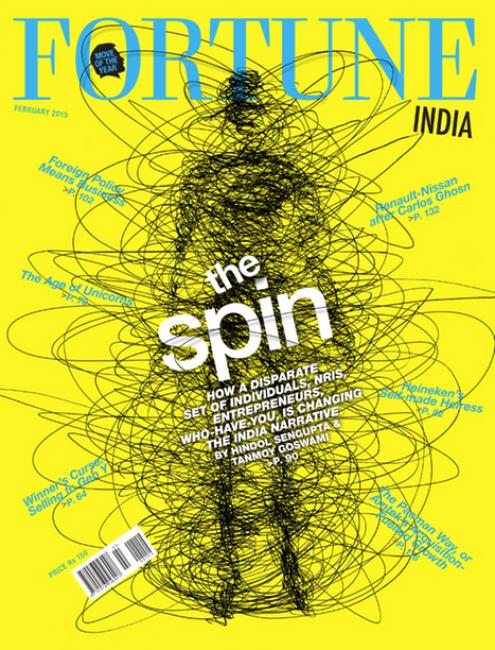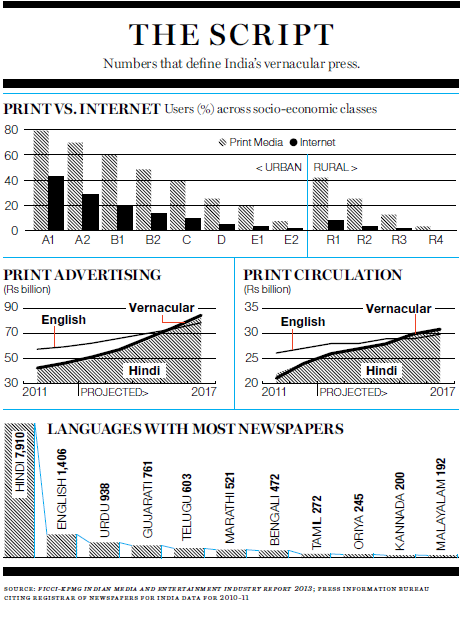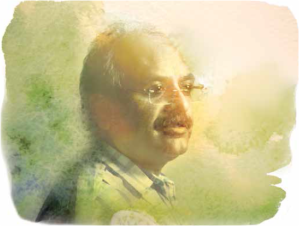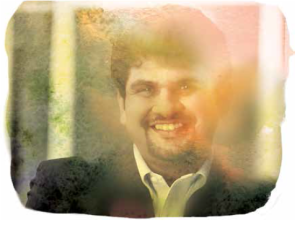 THE YEAR: 2007. Hari Kiran Vadlamani, then 45, had secured a big exit from his energy business KSK Energy Ventures (then called KSK Power Ventur). That was when he began to seriously contemplate his Indian identity. “I saw that every successful nation had a sense of its civilisational greatness—from American exceptionalism to Chinese economic power—but India,” he says. “There was some blip about a rising GDP, but absolutely no sense of where we came from and what we had achieved.”
THE YEAR: 2007. Hari Kiran Vadlamani, then 45, had secured a big exit from his energy business KSK Energy Ventures (then called KSK Power Ventur). That was when he began to seriously contemplate his Indian identity. “I saw that every successful nation had a sense of its civilisational greatness—from American exceptionalism to Chinese economic power—but India,” he says. “There was some blip about a rising GDP, but absolutely no sense of where we came from and what we had achieved.”
By the end of 2010, even the rising GDP part was in trouble, with a series of financial scandals and internal squabbles plaguing Prime Minister Manmohan Singh’s government. Sanjaya Baru, who served as media advisor to Singh, says 2009 was Singh’s poll victory, but everyone in the Congress party pretended it was Congress vice president Rahul Gandhi’s. When Singh realised that the party was not with him, he let go of the India story. There was a void for someone else to fill. Led by Narendra Modi, scores of Indians like Vadlamani sought to do exactly that, giving the story what British economist and Labour Party peer Lord Meghnad Desai calls “the new-old spin”.
“I remember being on a panel with Montek Singh Ahluwalia (the last deputy chairman of the now-defunct Planning Commission and a close confidant of Singh), where I said the British didn’t open India for global trade. India had been trading successfully with the world for hundreds of years. But he didn’t want to hear that,” says Desai. “Oddly, the Congress felt that talking about Indian achievements was somehow ‘Hindu’ and ‘communal’. All of this fed into the ecosystem that found Modi as its head, and he harnessed it to tell a new story of India, which wasn’t new per se but was being retold in a vigorous way for the first time in decades.”
What exactly is this new story—the spin if you will? Desai breaks it down to one simple but powerful idea: India was a rich country and could be rich again. The Congress with its socialist leanings wasn’t interested in pushing this idea, he claims, but that’s what people wanted to hear. To be sure, every political dispensation has brought its own spin to the India story—for instance, late Prime Minister P.V. Narasimha Rao (of the Congress) had, in the afterglow of liberalisation, proclaimed “India Means Business”—but sweeping discontent with the previous government and deft exploitation of mass-media platforms that simply did not exist in such potent form earlier turned Modi’s pitch into a tidal wave. It created, as Vadlamani says, “a palpable sense among Indians around the world that here’s a man speaking our language”.
That’s the take-off point of the dominant narrative of 2014, by all accounts the most momentous year for India since the economy opened up two decades ago. In this version, armed with the spin, Modi proceeds to deliver a hysterical bump-up in “sentiment” (possibly the year’s most overused term) around all things Indian. Its most visible manifestation: the 42% spike in the Sensex between September 2013, when the Bharatiya Janata Party (BJP) announced him its prime ministerial nominee, and December 2014, roughly into his first six months in power.
Latent in any spin is the idea of excess, and it is so here too. “[The market is Modi-fied, defying] the growing chorus that nothing on the ground can change overnight from the bleak economic realities of the United Progressive Alliance (UPA) rule,” Rajiv Bhuva warned in ‘The Birth of a Bull Run’ in Fortune India’s July 2014 issue. But as the spin—first around Modi’s $100 million campaign, then his spectacularly choreographed global roadshows—gathered momentum, such nuances became trivial. (As we write this, the Sensex is up nearly 40%, and some project the bull run to continue till 2030.)
To put things in perspective, this was also the year when India reached (and tweeted from) the Mars orbit, the first country to do so at the first attempt, invoking awe worldwide. (Modi didn’t make it to Time’s Person of the Year shortlist, but Mangalyaan came second on its list of 2014’s greatest inventions, beating wireless electricity, nuclear fusion, and 3D printing.) Bellwethers of modern media—Quartz, BuzzFeed, and The Huffington Post—opened shop here, underlining the India story’s growing cachet. Facebook’s Mark Zuckerberg came bearing drone-beamed broadband, while Amazon’s Jeff Bezos visited with a $2 billion cheque, apparently to counter rambunctious desi e-commerce upstarts. And finally, manufacturing indicators hit a two-year high in December, even as, fatefully, China stuttered for the first time in a decade. Most commentaries on the year’s milestones, however, converged on one image: that of Modi, the teaseller-turned-PM, pulling the strings as sutradhaar (narrator), with ‘Swachh Bharat’, ‘Digital India’, and ‘Make in India’ his chosen epiphanies.
It is a compelling image, except it glosses over the complex constellation of forces in a year when, as Twitter’s India and Southeast Asia market director Rishi Jaitly puts it, “something about India changed permanently”. Hindsight might yet prove that assessment disproportionate, but there is a feeling that in this India, spin—or, to put it differently, raucous exuberance after a period of sterility—is valid proxy for real change. The means, in other words, is the end.

Modi is a prime catalyst in this, but to call him the only one does disservice to three much larger factors—each breaking away from the usual narrative of India and adding to the spin—even as they are strengthened by it. First, the emergence of a distinct right-of-centre idea of India, born out of disenchantment with the country’s self-image in the Congress years. Then, a dramatic power shift in the business community, with a new breed of first-generation entrepreneurs upstaging the elite establishment. And finally, the unfettering of public opinion brought about by social media, Twitter in particular.
SHASHI SHEKHAR, CEO OF NITI DIGITAL, a digital information company, understands the power of ideas. Niti Central, the flagship of Niti Digital with the tagline ‘Bold and Right’, was funded by serial entrepreneur Rajesh Jain (himself a Modi votary) and became a key online resource for the Modi campaign, including its now famous Mission 272+ platform. An IIT-Bombay and Infosys alumnus (the typical profile of Modi’s backroom managers), Shekhar says he first began to think about a different idea of India when, in 1993, authorities at IIT-Bombay refused to let a cut-out of Swami Vivekananda appear in saffron clothes, which the monk wore for most of his adult life. “We finally had to show Vivekananda wearing blue clothes,” says Shekhar.
“I was clear that one day one would have to do something about this.” Niti’s pitch is simple—a different India is possible. “Before the elections, we were clear that only Modi could deliver what we wanted,” says Shekhar. “Now that he has won, we are not looking only to be cheerleaders. Our commitment is to anyone who will create a prosperous India and speaks the language of prosperity.” That has created for Modi what Baru calls the clarity of agenda that Indian parties rarely have—economics, economics, economics. “Without that, all talk of the glory of India is futile.”
Sanjay Anandram, serial investor, was looking to back a vehicle that would speak this language. In 2013, he chanced upon two techies, Prasanna Vishwanathan and Amar Govindarajan, who had been running a blog called Centre Right India, and had bought the rights to the Swarajya magazine for Rs 40,000. Swarajya was started by C.Rajagopalachari, who fell out with the first Prime Minister Jawaharlal Nehru and his Soviet Union-inspired economics. (Rajaji, as he was called, also started the Swatantra Party, promoting free-market economics, in 1959.) The revived edition has roped in veteran journalist Sandipan Deb, economists Bibek Debroy and Surjit Bhalla, and entrepreneur Jerry Rao on its editorial board.
Anandram says: “We realised that in order to change politics and the discourse, entrepreneurial capital must come in.” This had happened with companies like the Birlas that supported Gandhi. But over the years, private money only came into politics to fix the system. “We did not want that. We believed that first-generation entrepreneurial money must come into the political discourse to alter it.”
Vadlamani, for instance, is an investor in Swarajya and has funded the Creative India Foundation, which has several verticals on arts and culture, and patron of India Facts, a Right-leaning portal to promote research and opinion “countering the common socialist narrative of India”. He has also funded works by 25 Indian visual artists, and is the founder of the Advaita Academy, which promotes Vedanta. Vadlamani says he sees his work as he would any other start-up, asking what is the opportunity, what is the market.
“The idea is to support a bit of India wherever we can,” he explains. “Is there a literary festival happening somewhere in the world where we can place an Indian writer? Let’s then pay for their travel and stay. Is there a food show happening? Can we put Indian food in it? Let’s pay for that. As we do this, we are tracking incremental gains on the impact of Indian soft power.”
Each of these platforms has found its niche. India Facts publishes pugnacious rebuttals of Left-leaning opinion (‘Charlie Hebdo or the nuanced intolerance of our liberals’), while Swarajya is more sober (‘When will the NDA government reform the aviation sector?’). Niti Central, meanwhile, is everyday politics-focussed (‘Kiran Bedi joins BJP —will hurt Kejriwal’). All this, says Meghnad Desai, changes the way the world looks at India, at least temporarily. “It also changes the way India looks at itself,” he says. At least temporarily.
FAR FROM POLITICS, another bunch of entrepreneurs is using the spin to wrest control of the India story from an exclusive set.
Take Shradha Sharma, the hyper-animated 34-year-old founder of Bangalore-based YourStory, a leading media platform for startups. To our point that despite all the feelgood around the new government, India’s elite corporations failed to produce a single breakthrough moment last year, Sharma asks us to reorient our vision. “Look at what entrepreneurs achieved, and you’ll realise [that there wasn’t one but several] breakthroughs.”
In fact, if Modi permanently changed the course of India’s politics in 2014, there is a feeling that startups and entrepreneurs did the same to business. That’s the theme reverberating from the Financial Times (‘India’s startups are pulling in Silicon Valley’s big hitters’) to HuffPo (‘India On The Verge of a Tech ‘Gold Rush’’)—fuelled by Flipkart’s $11 billion valuation, JustDial’s Rs 950 crore IPO, SoftBank’s $837 million investments in Snapdeal and Ola, and Zomato’s overseas acquisition spree.
While the stars of the new economy derive their power from the sheer heft of the Indian market rather than coziness with the day’s political masters, Sharma acknowledges that the Modi effect has helped. “When I started YourStory six years ago, people said, ‘Nobody will come to a website that only glorifies startups.’” Now, with the Prime Minister rooting for entrepreneurs on Twitter (Sharma calls it the “startup-ism in the government’s lingo”), the game has changed. Last year, YourStory’s social following grew by over 400% from under a lakh in 2013. Sharma says people often accuse her of romanticising the new India. “I tell them, look around. This is real.”
Bangalore, India’s startup central and, some say, the challenger to Mumbai’s position as business capital, crackles with this feeling. Sitting in his office that also doubles as a godown for products under development, Rajiv Srivatsa, COO and co- founder of online furniture retailer Urban Ladder, sums it up: “Success breeds confidence, and confidence just spreads.” He says thanks to a blowout year for the Internet and mobile in general and e-commerce in particular (sales reportedly crossed Rs 1 trillion), entrepreneurs can now take bolder bets at a bigger scale.
Srivatsa reacts sharply when we bring up the suspicion in some quarters that all this is one gigantic bubble. “This isn’t the dotcom era when people invested blindly without real demand,” he says. “We now have actual data that points in one direction: crazy growth.” He does, however, concede that there’s a sudden, unforeseen glamorisation of the entrepreneurial journey, denting the country’s obsession with “success”.
Mukesh Bansal, who sold his fashion retail site Myntra to Flipkart in the most high-profile deal of last year, puts it more earthily. “Until now, people would look at the same guys and say, ‘taxi chalata hai (drives a taxi), kapde bechta hai (sells clothes), travel agent hai.’” Technology and exponential growth, says Bansal, have given these careers a new spin. It is hard to miss the echo of Modi’s chaiwallah persona, first used as a pejorative by the Congress, only to be spun by the BJP’s propaganda machine into a badge of honour.
Startups like Team Indus that are in geekier businesses—it is best known for building a lunar lander for the Google LunarX Prize (see ‘India’s Unknown Moon Mission’ in Fortune India’s August 2014 issue)—don’t see the buzz as a post-2014 phenomenon. There’s always been a belief simmering in India’s entrepreneurial ecosystem, argues Rahul Narayan, the team’s founder, which has nothing to do with the highs and lows of the Sensex. He bats for the need to preserve a sense of continuity. “We, for example, were inspired by what the Indian Space Research Organisation (ISRO) had already achieved.” Bansal too points out that while market sentiment ebbed in the past few years, consumer sentiment, especially in e-commerce, has been consistently on the rise.
There’s also consensus that the roots of the startup boom lie in the IT revolution long before Modi. (More than one entrepreneur says startups mushroomed in Bangalore because software engineers working in the city’s big IT companies were disgruntled with their day jobs.) That said, most are happy to play along with any kind of spin that keeps the current euphoria going. Srivatsa admits that the media has made the startup story look bigger than it is, so that old-fashioned corporate results no longer monopolise the news.
The media’s love of course has its own loaded context. “There’s a lot of you-scratch-my-back-I-scratch-yours that goes in reporting on big companies,” says Anant Goenka, the 29-year-old director of new media at The Indian Express Group. “I’m not suggesting paid news, but ‘If you cover my launch on page 1, I’ll give you an exclusive with my CEO’-type conversations are increasingly rampant in the business news space.” Goenka says writing about startups is an easy route to humanise and be less dependent on corporate India’s mighty public relations companies.
To a smaller set, the likes of Rohin Dharmakumar, an early-stage entrepreneur and ex-Forbes India (competitor to Fortune India) journalist, the constant race to stay in the limelight is reason for worry. Somehow spinning a catchy story has become the primary goal for many, he says. “There’s this concept of hustling, that anything goes, so long as you are able to sell your story. Ethics and solid numbers have suffered.”
HUSTLE IS ONE OF THE words Twitter’s Rishi Jaitly invokes to describe his impression of India in 2014. “I remember sitting on a conference call in 2012 (the year he took the job) and telling my colleagues, ‘2014 will be big’.” With 56 million election-related tweets in the five months to the polls, that prophecy came alive.
Technology was a key part of Atal Bihari Vajpayee’s 2004 campaign (‘India Shining’) too, with pre-recorded voice calls and the promise of holding online rallies of 100,000 people every day. But in 2014, the message morphed into the medium: Modi’s campaign accused mainstream media of jettisoning his voice; Twitter embraced that voice and amplified it. The PM’s three Twitter handles (@narendramodi, @PMOIndia, and @narendramodi_in) have a few times the readership of the largest newspaper in the country,” says Raheel Khursheed, Twitter India’s head of news, politics, and government. That’s why eight months into the job, he hasn’t felt the need to appoint a press advisor.”
Does Modi’s inescapable clout on the platform—@narendramodi has the second-largest following (9.6 million) among politicians worldwide, second only to @BarackObama (53.5 million)—give his narrative an unfair edge? “We do not take a moral stand on what kind of content becomes big on Twitter,” says Jaitly. The audience will gravitate towards you if you can offer highly personal, authentic, interactive storytelling. “Whether you are an election candidate or a brand, the formula remains the same.”
Khursheed suggests that one of the reasons the Congress was swept away in the elections was that it failed to use that formula (read: juice the social web as effectively as Modi). He insists that rather than centralising power, Twitter’s two- way microphone allows everyone ownership over what ought to be the agenda in public conversations. That also means while you can craft a clever message, you cannot predict or control what spin it will end up acquiring. A big part of Khursheed’s job is to help users like Modi deal with the constant public demand for new content. This is the meme culture, where the importance of a message is decided by how quickly it spirals into a #trend, and how long it stays there.
Modi can learn a thing or two from Obama about shouldering this burden. “He’s done Reddit AMAs; he’s appeared on web comedies; he’s smiled for a slew of behind-the- scenes photos and GIFs, all tastefully filtered and posted to Instagram. The Obama White House is on literally every mainstream social network except Myspace; there are people employed at said White House who are paid to turn Obama’s policies into ‘shareable’ memes”, the Washington Post wrote days before the President’s India visit.
The pressures on Modi are not yet so severe, but that looks temporary given the legacy he has built for himself. It’s now a fading footnote that the BJP’s ideological parent, the Rashtriya Swayamsevak Sangh (RSS), was far from certain about Modi for PM to begin with. Some argued that the momentum was already with the party, and even if a different name
(L.K. Advani or Shivraj Singh Chouhan)—or no name—was announced, it would still win. But the famed booth-level network of the BJP and the RSS, the panna pramukhs, refused to work without Modi. “His image management,” a senior BJP leader told Fortune India, “was always grassroots-focussed. It was so for 10 years, but no one really got it until before the polls.”
Khursheed shares a story. On Modi’s birthday, as he acknowledged the wishes of the hoi polloi on Twitter, one follower went unnoticed. “Why are you ignoring me? Have you blocked me?” he demanded of the PM. In another India this guy wouldn’t stand a chance, says Khursheed. But Modi, whose image as a grassroots Prime Minister is at stake, placated him with a smiley face.
M.G. Parameswaran, advisor to Mumbai-based ad firm Draft FCB+Ulka (which created the ‘India Means Business’ campaign for P.V. Narasimha Rao), spells out the obvious risk: confusing Modi’s relentless PR for the real deal. “That’s merely the scaffolding,” he says. “It will have to come off when he starts the real action, whether it’s tax reforms, and reforms, or stronger anti-corruption measures.”
Modi of course knows the perils of overdoing a spiel courtesy BJP’s disastrous ‘India Shining’ campaign in 2004, which Chintamani Rao, a strategic marketing expert and former CEO of Times Global Broadcasting, describes as a hollow manufacturer’s claim. In contrast, ‘Make in India’ is a proposition. It provokes the question, “Why?” If that is answered effectively, it will work. If not, it will be another vacuous slogan, Rao says.
FOR NOW, CONTRADICTIONS are swirling. December 2014’s Fortune India 500 analysis revealed that revenue growth of India’s elite corporations fell to 9.5% levels from 11.5% in 2013, while profit growth dropped to 4.5% compared with 5.85%. The same month, a report from financial advisory firm Grant Thornton painted a far rosier picture. It said Indian companies closed merger and acquisition and private-equity deals—a barometer for business appetite and optimism—worth $50.5 billion in 2014, a 32% jump over the previous year. Staggering returns by any measure, more so compared with the 11% fall in 2013—except that view obscures another crucial nuance. Many of these deals were already on their last legs in 2013. They were held up because good economic data had dried up, says Prashant Mehra, partner at Grant Thornton. “The money started flowing as Modi brought the hope of change … though in terms of fundamentals, nothing really changed.”
At this year’s Vibrant Gujarat, a business summit started by Modi himself in 2003 and played up these days as the Davos of the East, CEOs seem cautious. Piyush Gupta, CEO of Singapore-based DBS Bank, says all that the spin has done is to change “the real disillusionment about India under the last government. Everyone woke up to the fact that the Indian reality had little to do with the India story,” he says, adding that the new government won’t have forever to start executing. “Ordinances to push reform show resolve, but that’s just the beginning,” Gupta says. Where things go from here will determine whether DBS goes ahead with its plan of opening 80 branches in India in the next five years from its current six.
Richard Lancaster, CEO of China Light and Power, says even though his company is committing $2 billion to build new coal-based power plants in Gujarat, it is in wait and watch mode. Walmart India CEO Krish Iyer is hoping to have 70 stores by 2020. That means a lot of investment (he will not say how much). “Investment needs momentum and goodwill,” says Iyer. “The climate needs to support it.” Has the climate changed? “The move towards administrative reforms is useful; we are hopeful,” is all he says.
Don’t such middle-of-the-road statements signal a comedown from the frenzy a few months back? Diane Farrell, acting president of the powerful U.S.-India Business Council, in India as part of Obama’s visit, argues that’s an unfair way of looking at things. “This government is clear that it will not make flashy, big-bang decisions that grab the headlines. It is going about its work quietly,” she says.
She finds support in a JP Morgan report, aptly titled ‘India and Mr Modi: After the honeymoon’. “So far, the majority of policy measures tabled are neither surprising nor breathtaking,” it reads. “But unlike his critics, we see this as a major strength of the government’s approach, not a weakness.” What of the expectations of a miracle that 2014 engendered? “That’s a real challenge,” Farrell admits, “but [hopefully people understand that] it’s actually incremental change rather than an earthquake that leads to tectonic shifts.”
Meanwhile, Farrell would have you believe there’s little fear of Modi getting carried away by his own spin. “He doesn’t allow himself distractions,” she says.
(First published as the cover story of Fortune India‘s Feb 2015 issue; coauthored with Hindol Sengupta; photograph by Bandeep Singh; illustration by Nilanjan Das.)


